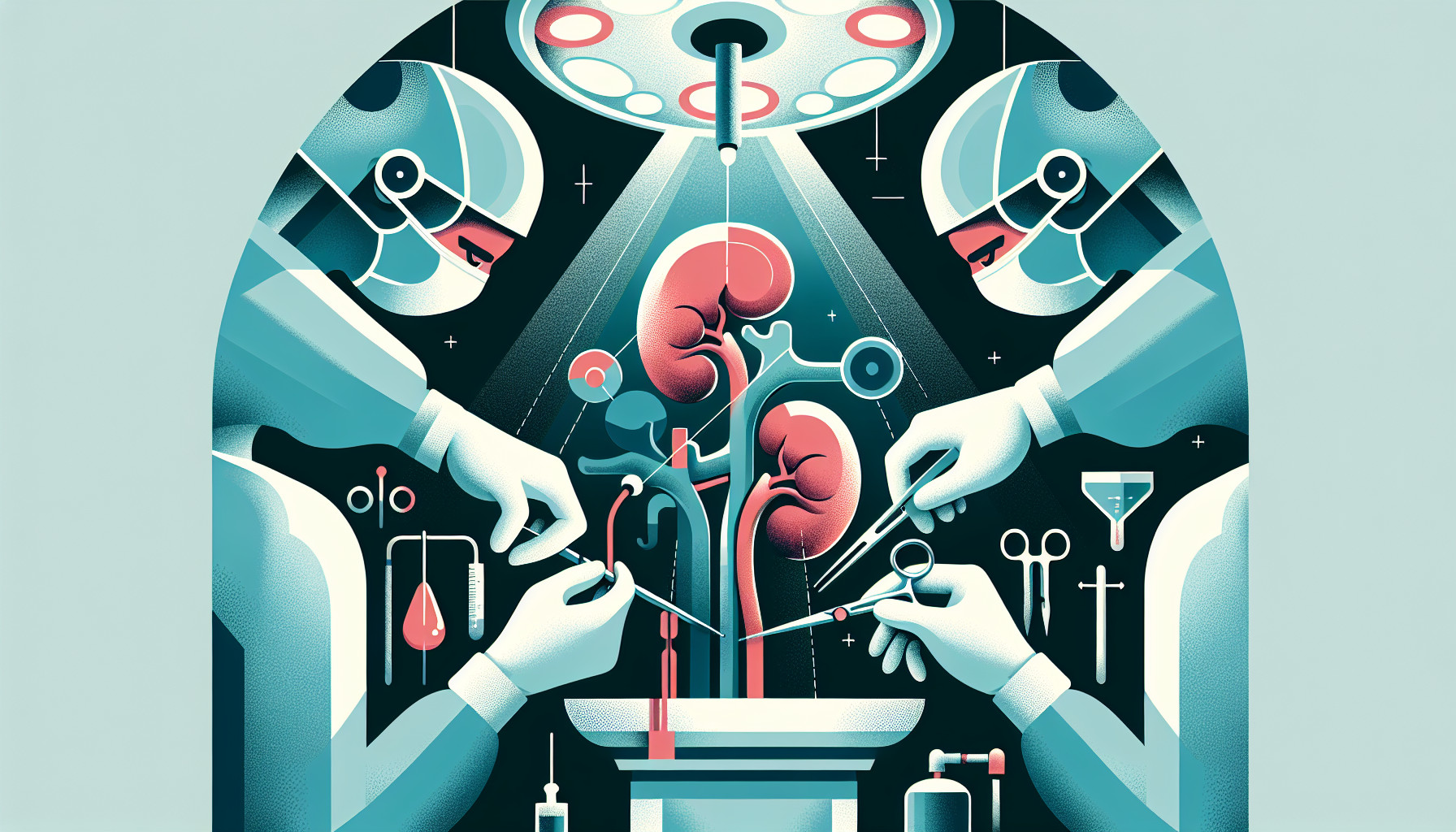Our Summary
This research paper discusses a study done on two different methods used to manage a patient’s airway during a laparoscopic donor nephrectomy (a type of surgery where a kidney is removed from a living donor for transplantation). The two methods are the use of a Supraglottic Airway (SGA) and an Endotracheal Tube (ETT). The study was carried out from August 2018 to November 2021 with adult donors aged over 18.
The study found that the use of second-generation SGA in this type of surgery is safe and can have benefits over the ETT method. The SGA method resulted in less airway pressure 5 minutes after pneumoperitoneum (the introduction of gas into the abdomen), and higher lung compliance (the ability of the lungs to expand) during surgery.
There were no cases of desaturation (low levels of oxygen in the blood), hypercapnia (excess carbon dioxide in the bloodstream), or aspiration pneumonitis (lung inflammation caused by inhaling foreign material) in patients. This suggests that the SGA could be a better option for managing the airway of patients undergoing this type of surgery.
FAQs
- What are the two methods discussed in the study for managing a patient’s airway during a laparoscopic donor nephrectomy?
- What benefits does the use of second-generation Supraglottic Airway (SGA) have over the Endotracheal Tube (ETT) method in this type of surgery?
- Were there any cases of desaturation, hypercapnia, or aspiration pneumonitis in patients undergoing laparoscopic donor nephrectomy with the SGA method?
Doctor’s Tip
One helpful tip a doctor might tell a patient about laparoscopic nephrectomy is to expect some discomfort or pain in the abdomen area after the surgery. It is important to follow the prescribed pain medication regimen and to communicate any concerns or changes in pain levels to your healthcare provider. Additionally, it is important to follow post-operative care instructions, such as avoiding heavy lifting and taking care of the incision site, to promote healing and prevent complications.
Suitable For
Patients who are typically recommended for laparoscopic nephrectomy include those with kidney diseases such as kidney cancer, kidney stones, kidney infections, or kidney damage. Other reasons for undergoing this surgery may include kidney donation for transplantation, kidney removal due to trauma, or kidney removal for other medical conditions.
In the context of the study mentioned above, adult donors aged over 18 undergoing laparoscopic donor nephrectomy are recommended for the surgery. These donors are typically healthy individuals who are willing to donate one of their kidneys to a recipient in need of a kidney transplant. The study focused on managing the airway of these donors during the surgery to ensure their safety and optimal surgical outcomes.
Timeline
Before the laparoscopic nephrectomy:
- The patient undergoes pre-operative testing and evaluation to determine if they are a suitable candidate for the surgery.
- The patient meets with the surgical team to discuss the procedure, risks, and benefits.
- The patient is instructed on pre-operative preparations, such as fasting before the surgery.
- The patient is taken to the operating room and administered anesthesia.
During the laparoscopic nephrectomy:
- The surgeon makes small incisions in the abdomen and inserts a laparoscope (a thin tube with a camera) to view the kidney.
- The surgeon uses specialized instruments to detach the kidney from surrounding tissues and blood vessels.
- The kidney is removed through one of the small incisions.
- The incisions are closed, and the patient is taken to the recovery room.
After the laparoscopic nephrectomy:
- The patient is monitored closely for any complications, such as bleeding or infection.
- Pain management medications are administered to keep the patient comfortable.
- The patient is encouraged to get up and move around to aid in recovery.
- The patient is discharged from the hospital once they are stable and able to manage at home.
- The patient follows up with their surgeon for post-operative care and monitoring.
What to Ask Your Doctor
Some questions a patient should ask their doctor about laparoscopic nephrectomy include:
- What are the potential risks and complications associated with laparoscopic nephrectomy?
- What is the recovery process like after laparoscopic nephrectomy?
- How long will I need to stay in the hospital after the surgery?
- What can I expect in terms of pain management following the surgery?
- Will I need to make any lifestyle changes or follow any specific dietary guidelines after the surgery?
- How long will it take for me to fully recover and return to normal activities?
- Are there any long-term effects or considerations I should be aware of after undergoing a laparoscopic nephrectomy?
- What are the alternatives to laparoscopic nephrectomy, and why is this method recommended for me?
- What is the success rate of laparoscopic nephrectomy in terms of kidney function and overall health outcomes?
- How often will I need to follow up with you or a specialist after the surgery?
Reference
Authors: Lee JE, Kim HY, Lee KW, Kim GS. Journal: Sci Rep. 2023 May 24;13(1):8406. doi: 10.1038/s41598-023-34691-x. PMID: 37225750
